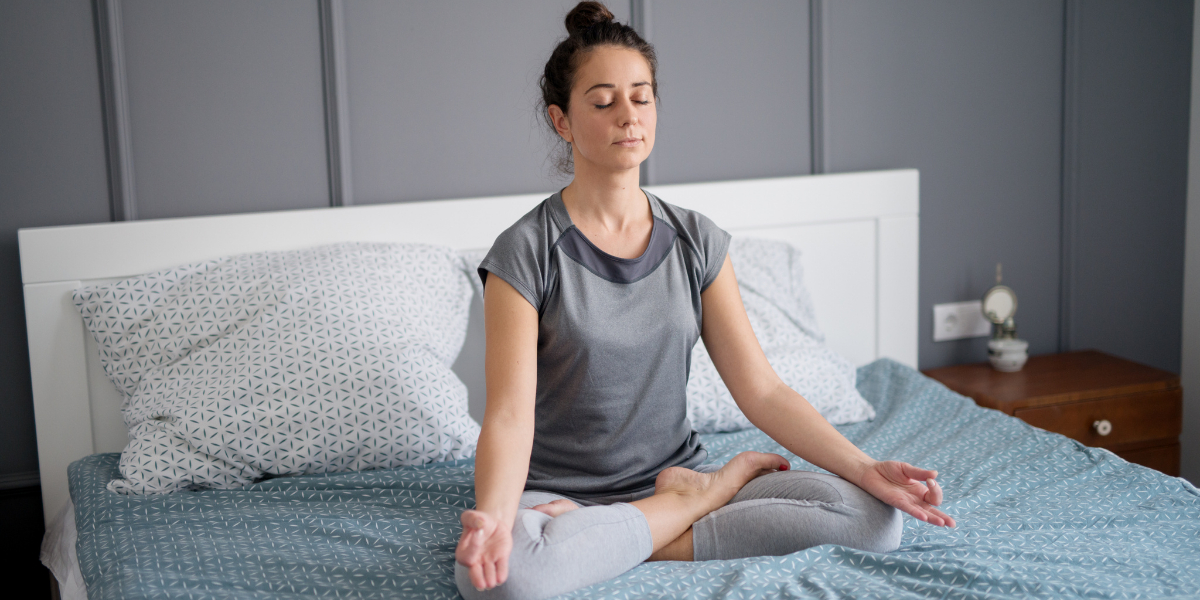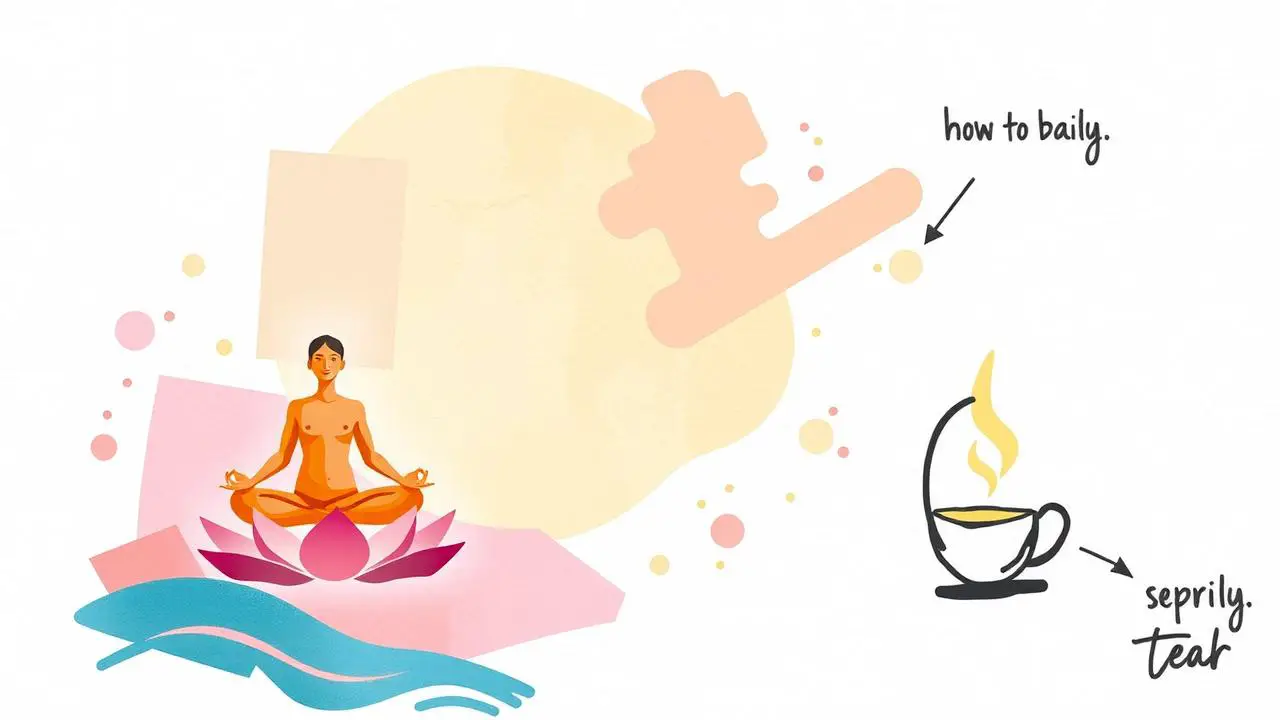Are you looking to improve your mental wellbeing? Have you heard of mindfulness meditation, but aren’t sure where to start? Don’t worry—we’ve got you covered.
To practice mindfulness meditation for beginners, start by finding a quiet and comfortable place to sit. Set a timer for 5-10 minutes and focus on your breath, paying attention to the sensation and rhythm of inhaling and exhaling. When your mind wanders, gently bring it back to your breath without judgment. You can also try guided meditations or apps to help you get started. Consistency is key, so try to practice every day and gradually increase the length of your sessions.
In this article, we’ll explore the basics of mindfulness meditation and provide you with the necessary tools to start your own mindfulness practice. So, if you’re ready to take your mental health into your own hands, let’s dive right in!
By now, you’ve probably heard of mindfulness meditation, but may not know what it actually is. Simply put, mindfulness meditation is a form of meditation that encourages awareness of thoughts, feelings, and physical sensations, while allowing the practitioner to observe without judgement.
In addition to calming the mind and body, mindfulness meditation offers a plethora of benefits, including increased focus, improved sleep, and stress reduction. So, if you’re looking to increase your wellbeing, mindfulness meditation is a great place to start!
What is Mindfulness Meditation?
To gain an understanding of what it is, let’s start by exploring what mindfulness meditation is all about.
Mindfulness meditation is a type of meditation where you focus on being present in the moment. It’s a practice that involves sitting quietly and focusing on your breath, bodily sensations, and thoughts.
Mindfulness meditation encourages people to be in the moment and observe the present without judgment. It allows people to become aware of their thoughts and feelings without getting caught up in them. By doing so, mindfulness meditation can help reduce stress, improve concentration, and increase overall wellbeing.
Mindfulness meditation is one of several types of meditation, and it has many benefits. It can help to reduce stress and anxiety, as well as increase focus and concentration. Studies have also shown that it can help to improve physical health, improve sleep, and increase happiness.
Furthermore, mindfulness meditation can help to improve relationships, increase self-awareness, and promote better communication.
Mindfulness meditation is an easy and accessible practice that can be done virtually anywhere. With regular practice, it can help to cultivate a sense of inner peace and balance that can be applied to everyday life.
With its many benefits, mindfulness meditation can be a great way to reduce stress and improve overall wellbeing. Going forward, let’s explore the various benefits of mindfulness meditation.
Benefits of Mindfulness Meditation
By engaging in mindfulness meditation, you can reap the rewards of enhanced mental clarity, improved focus, and a heightened sense of inner peace – a veritable ‘treasure trove’ of benefits!
Mindfulness meditation involves simple relaxation techniques and mental clarity exercises that can help bring a sense of calm and focus to your life. With regular practice, the rewards of mindfulness meditation can become even more pronounced: improved emotional regulation, greater self-awareness, and an increased ability to handle stress and difficult situations.
When practicing mindfulness meditation, it’s important to create an environment that’s conducive to relaxation. This can involve setting aside a specific time each day for meditation, as well as creating a quiet and comfortable space for the session. You may also want to consider using soothing music or aroma therapy to enhance the experience. Additionally, it’s important to dress in comfortable clothing that allows you to move freely and to use cushions and pillows to support your body in a comfortable position.
By taking the time to create a supportive environment, you can ensure that your meditation practice is more effective and enjoyable. With the right preparation, you can look forward to a more meaningful and productive meditation session – one that will bring the many benefits of mindfulness meditation to your life.
Preparing for a Meditation Session
When choosing a location for your meditation session, consider a quiet and peaceful place that’s free from distractions.
Create a comfortable environment for yourself by making sure you’re dressed comfortably, the temperature’s comfortable, and you’re sitting in a comfortable position.
Lastly, before beginning your meditation, take a few moments to become aware of your environment and allow yourself to relax into the experience.
Choosing a Location
Identifying the ideal spot to focus your attention can be a key element in your journey to cultivate a mindful state. When selecting a location for your meditation, it’s important to choose a place that allows you to remain focused and undisturbed.
It should be a space where you feel comfortable and are able to relax in a way that allows you to cultivate awareness. Find a spot that is relatively quiet and free from distractions, such as a secluded corner of your yard or a quiet room in your house.
Consider the temperature and lighting of the area as well – if you’re too hot or too cold, or the light is too bright, it can be difficult to stay focused. By mindful selection of the right location, you can create the perfect atmosphere for your meditation session.
Once you’ve chosen the right spot, you can begin to create a comfortable environment that’s ideal for mindfulness.
Creating a Comfortable Environment
Seeking solace in a tranquil and inviting atmosphere is essential for cultivating a mindful state. To create a space that will support your practice, take time to focus on sensory awareness and self-care.
Incorporate items that provide comfort and relaxation, like fluffy blankets and calming candles, as well as soothing music and favorite books. Also, include a few items that may remind you to stay in the present moment, such as a mala necklace or a wind chime.
Make sure to keep the surrounding environment free of distractions like phones, television, or other electronics. Once your space is ready, you can move on to the next step of establishing a routine.
Establishing a Routine
Establishing a routine can be key to unlocking the potential of a successful mindfulness meditation practice for those new to the practice.
Creating a consistent time and space to practice mindfulness meditation is important for beginners to get the most out of their sessions. This helps to create an environment that encourages focusing attention and cultivating awareness. With a routine, the mind and body can more easily enter into a meditative state.
Routine can also be used to help beginners take their mindfulness practice out of the meditation space. This can include setting reminders to practice throughout the day, or to pause and check in with yourself and your surroundings.
Taking a few moments to observe your body, your breath, or the feelings that come up in the moment are all mindful practices that can be incorporated into a daily routine. By creating a routine, beginners can begin to establish a habit of mindfulness meditation that will benefit them in the long run.
This can help to bring more mindful awareness to their days and open up the potential of a more meaningful, connected relationship with the present moment.
Setting an Intention
Before delving into a mindfulness meditation practice, setting an intention can help focus and deepen the experience, allowing for a more meaningful connection with the present moment.
Taking a few moments to consciously set an intention can be a powerful way to start the practice, giving it more depth and purpose. It’s important to remember that the intention isn’t something that needs to be achieved, but rather something to keep in mind as one practices. This can be something like calming the mind, refocusing attention, or simply being present.
Establishing this intention can help to keep the focus on the meditation and can also help to keep the practice from becoming too rigid. It’s important to know that one doesn’t have to ‘get it right’ but rather to simply let the intention be, allowing it to be a gentle reminder as the practice unfolds.
This can be a beneficial way to start a mindfulness practice, helping to keep the focus in the present moment, and allowing for a deeper connection with the practice.
As the practice moves forward, this intention can help to create space, allowing for a more mindful experience. This can help to create a more meaningful connection with oneself and the meditation, providing a way to stay grounded in the present moment.
This intention can be a source of comfort and focus, helping to keep the practice moving in the right direction. With this in mind, mindful breathing can be the next step in a mindfulness practice.
Mindful Breathing
Embrace the power of mindful breathing to help you stay grounded and connected to your meditation. Mindful breathing is a powerful tool in helping you to reach a deep relaxation and focus your attention. It is a simple, yet effective way to begin your journey into mindful meditation.
Mindful breathing can be done anywhere, at any time throughout your day. It can be done sitting, lying down, or even standing. All you need to do is focus on your breath. Pay attention to the sensation of the breath entering and leaving your nostrils, or to the rise and fall of your chest or abdomen.
Allow the breath to be natural and effortless. Don’t try to control it, but simply observe it. When your mind wanders, as it likely will, gently guide your focus back to your breath.
With practice, you’ll become better at sustaining your focus and achieving greater levels of relaxation.
The practice of mindful breathing is a great way to start your mindful meditation. It helps to settle and quiet the mind, allowing you to transition into the next step of mindfulness meditation: body scanning.
Body Scanning
Let body scanning help you relax and find inner peace – a soothing respite from the hustle and bustle of everyday life.
To get started, you’ll need to create a calming environment that is free of distractions. Find a comfortable spot to sit, close your eyes and focus on your breath. Allow your body to sink into the ground and begin to explore your body with mindful awareness.
Start at your toes and slowly move up your body, paying attention to any sensations or feelings you have along the way. Focus on your body as a whole, and notice any areas of tension or tightness. While you’re doing the body scan, take a few deep breaths, allowing for any sensations to wash over you.
Your body may start shaking or trembling if it needs to release some tension. Stay in the present moment, allowing yourself to become aware of any feelings that arise.
This exercise is all about developing a sense of self-awareness. By focusing on your body, you can learn to understand where tension is held and how it affects your physical and mental well-being.
Through practice, you can cultivate a greater understanding of yourself and your own needs. As you become more comfortable with body scanning, you can move on to developing a regular practice.
Developing a Practice
Take a few moments each day to nurture your body and mind through body scanning, and discover the power of a mindful awareness. Developing a practice of mindfulness meditation can bring many calming techniques and mental clarity.
Here are five steps to help you get started:
- Make time each day to practice. Set a specific reminder on your phone, or make a note on the calendar, to help you keep up your practice.
- Find a comfortable position. Whether you’re sitting, standing, or lying down, make sure you’re in a posture that allows you to stay relaxed and alert.
- Allow your attention to rest on your breath. Notice the sensations of the inhale and exhale, and the gaps in between.
- Bring your attention to any sensations you become aware of in the body. Notice the sensations without judgment, and acknowledge them without getting attached to them.
- When your attention wanders, gently bring it back to the breath. This is a natural part of the practice and helps to cultivate mental clarity.
As you begin to practice body scanning and mindfulness meditation, you may find that it brings you a sense of peace, balance, and well-being.
With time and patience, you will learn to combine body scanning with other mindfulness practices for a powerful and positive impact on your emotional and physical well-being.
Can I Learn the Basics of Mindfulness Meditation as a Beginner?
Yes, you can definitely learn the basics of mindfulness meditation as a beginner. There are many mindfulness beginners tips that can help you get started, such as focusing on your breath, tuning into your body sensations, and practicing non-judgmental awareness. With dedication and practice, you can cultivate mindfulness in your life.
Conclusion
If you’re just getting started with mindfulness meditation, you may be feeling a bit overwhelmed. But don’t worry, it’s not as intimidating as it seems.
With a few simple steps and a routine practice, you can get the hang of it in no time. Just remember to take it slow and be gentle with yourself.
As the saying goes, “Rome wasn’t built in a day”. Steady and consistent practice is the key to success. With persistence and dedication, you can become an expert in mindfulness meditation and reap the many benefits it has to offer.




